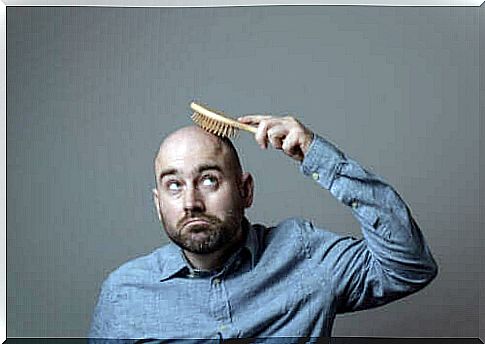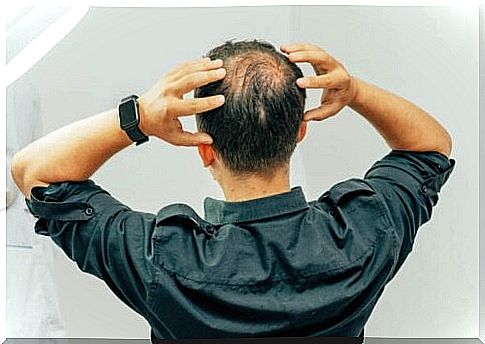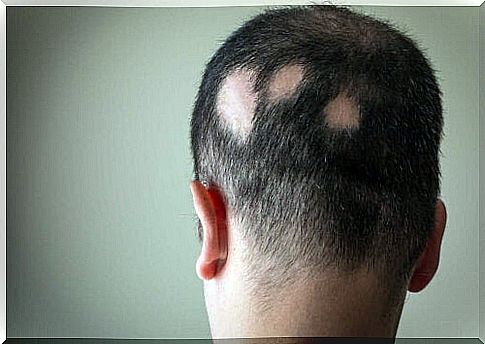Different Types Of Alopecia

There are several types of alopecia, or abnormal hair or hair loss. According to scientific studies, this pathology is divided into categories according to its rate of spread, its causes, the underlying diseases, and clinical criteria such as the extent, hair characteristics, and effects of the disease on the underlying skin.
Scientific publications on the subject have determined that male-type hair loss (the most common type of alopecia) affects 6-12% of women aged 20-30 and up to 55% of men over 70. Due to its high prevalence, aesthetic problem, and the possible occurrence of other underlying diseases, it is necessary that we know the different types of alopecia properly and know how to interpret them.
Different types of alopecia
There are so many different types of alopecia that it is impossible to talk about common manifestations and symptoms. Its prevalence is global, and it also has some distributional characteristics related to geographical location and human ethnicity.
Alopecia is defined as the loss of hair or hair that can occur in any part of the body where hair and hair are found. To facilitate their diagnostic algorithms, this pathology is divided into two major groups, which are as follows:
- Those with normal or healthy scalp (no scars).
- Those with pathological signs (scars) on the scalp.

Non-scarring alopecia
A common feature of all the variants presented below is that hair loss is not caused by the appearance of fibrous tissue emptying the hair follicle. In these cases, the hair follicle is not destroyed, but several different changes take place in it.
Male pattern hair loss
Androgenic or male pattern hair loss is the most common form of baldness, as several studies show that it is responsible for up to 95% of cases. As we have already mentioned, up to 55% of men suffer from it, while women make up about 10%.
Dermatological publications on the subject have shown that there are two main causes of this disease:
- Androgens and skin: The increased effect of male hormones (testosterone) in certain areas of the scalp contributes to a decrease in hair follicle activity until it finally atrophies.
- Cell Mechanism: It responds to the inherited component of every human being. The activity of RNA polymerase (an essential enzyme for protein synthesis) depends on certain genetic factors. This can shape hair growth patterns.
There are several treatments to alleviate male-type alopecia, such as the use of minoxidil, melatonin, finasteride, or laser therapy. Some of these medications are effective in up to 90 percent of cases because the hair stops completely falling out. Hair follicle regrowth, in turn, is a slightly more complex process.
Alopecia areata or baldness
Studies have shown that this type of baldness, characterized by the presence of circular patches in advanced areas of skin, is a very little known pathology. It is believed that several different factors determine its occurrence:
- Genetics: The presence of Alopecia areata in the genus contributes to its presence in the offspring in up to 40% of cases.
- Immunological causes: It has been reported that there is an association between this pathology and immune disorders such as thyroid-related diseases or vitiligo (destruction of melanocytes in the skin). It has also been linked to many commonly known diseases such as anemia, diabetes or rheumatoid arthritis.
- This disease also appears to be associated with many emotional factors such as stress as well as infectious pathogens as well as neurological variations.
Other types of non-scarring alopecia
We have described the two main non-scarring types of alopecia. However, there are many more, a few examples of which are:
- Traumatic hair loss: This occurs when the scalp is constantly damaged; this may be based, for example, on pulling or applying pressure to the hair, for example when tying or braiding the hair.
- Diffusion: This is a common, treatable form of hair loss. It can be acute or chronic.
- Alopecia caused by excessive intake or deficiency of vitamins and drugs or narcotics: Studies have shown that, for example, vitamin D deficiency or excess vitamin A can cause hair loss.
Scarred alopecia
According to scientific articles commissioned on the subject, scarred alopecia is characterized by permanent hair loss that can be replaced by either fibrosis or hyalinized collagen. This pathology accounts for 3% of hair loss observed in dermatological centers, so its clinical significance is relatively small.
Here are some factors that can contribute to this type of baldness:
- Physical causes: Burns, frostbite and other injuries. When the hair follicle is destroyed, it is replaced with scar tissue, which prevents new hair from growing.
- Tumors: Any tumor affecting the skin, both benign and malignant, can cause the occurrence of this pathology as a secondary effect.
- Infections: leprosy or cutaneous tuberculosis, as well as other diseases that permanently damage the skin, can also cause scarring alopecia.
- Chronic inflammatory processes: For example, rubella and other non-communicable diseases that cause skin damage can damage the hair follicle and thus prevent new hair growth.

Different types of alopecia: summary
Alopecia can be divided into non-scarring and scarring hair loss. Scarred alopecia can be divided into several different subcategories according to the focus of the hair loss and the underlying causes, but usually it depends on genetic or hormonal factors. Scarred alopecia, on the other hand, is a completely different type of hair loss, as it is usually caused by injuries and wounds that cause scarring of the hair follicle and thus prevent new hair from growing.
Male pattern baldness is the most common type of alopecia, affecting mainly middle-aged men. Fortunately, medicine has developed more and more different therapies today to alleviate and stop this harmless but tedious and aesthetically disturbing affliction.









